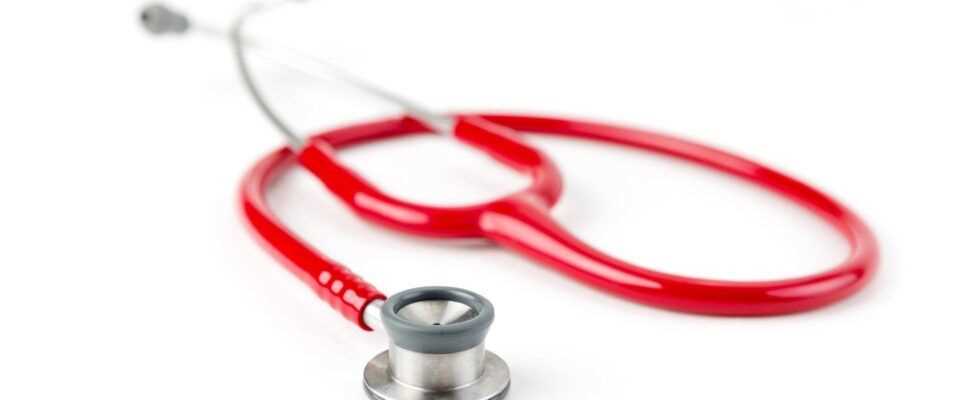The topic of cystitis accompanies many women all year round. In autumn and winter, the cold temperatures can cause a bladder infection, in summer, wet swimwear is often the trigger.
We spoke to Professor Karin Kraft, specialist in internal medicine, about cystitis.
Can you give us some statistical data about cystitis?
Professor Karin Kraft: Acute cystitis is particularly common in women. Between the ages of 15 and 39, 15.2 percent of women have at least one urinary tract infection each year, of the 40 to 59 year olds this applies to 11.4 percent, and the figure for women between 60 and 79 is still 9.7 percent. This is because women have a much shorter urethra than men, which makes it easier for pathogenic germs to get into the bladder.
Cystitis between 17 and 79 years is rare in men, only 2.2 percent suffer from it annually, and 5.3 percent from the age of 80. Favorable factors here are permanent catheter, stay in hospital and anatomical changes in old age, especially the enlargement of the prostate.
What are the typical symptoms of cystitis?
K. K.: Typical symptoms of cystitis are burning when urinating and frequent urge to urinate with small portions of urine, difficulty urinating, urge to urinate at night, pain in the bladder area, i.e. above the pubic bone, and bladder cramps. Occasionally the urine will look cloudy and / or smell unpleasant. Cystitis can also go completely unnoticed.
When should you go to the doctor?
K. K.: Most bladder infections in women are uncomplicated and heal without complications with the right treatment. However, if children, pregnant women, men, as well as patients with changes in the urinary tract or diabetics have a bladder infection or if they develop a fever, a doctor should always be consulted, as a complicated course must be expected.
How can I prevent cystitis?
K. K.: Prevention can begin with everyday life. A daily fluid intake of two liters is generally advisable. Complete bladder emptying and the right wiping technique after bowel movements – from front to back – are essential to prevent bacterial colonization of the bladder. Exaggerated genital hygiene in the form of intimate sprays and long hip baths is not recommended, as are contraceptive methods such as vaginal diaphragms and spermicides.
At the first signs of a bladder infection, there is the possibility of containing an acute, uncomplicated bladder infection in its emergence with specially developed herbal combination preparations from the pharmacy.
How is bladder infection usually diagnosed?
K. K.: The diagnosis mainly results from the typical complaints. In addition, if the diagnosis is not clearly possible, a urine test strip is used. If there are positive indications, a urine culture from the midstream urine may be used. For this purpose, the patient's urine is stored in an incubator for 24 to 48 hours in order to be able to draw conclusions about a possible infection based on the germ colonization. In some cases, for example with bloody urine, an ultrasound examination of the bladder or a bladder examination is also useful. A urine culture is always established in men.
Every second woman has it at least once in her life: a bladder infection. Symptoms, intensity and duration can vary
more
What is the typical treatment for cystitis in the normal case? Is an antibiotic absolutely necessary?
K. K.: In the case of uncomplicated cystitis, antibiotics should be avoided, since these highly potent substances can cause a not inconsiderable number of side effects. The risk of antibiotic resistance of the pathogens also exists with frequent use.
Antibiotics should therefore be reserved for complicated processes in which they are indispensable. Rest, warmth and herbal medication can treat acute and uncomplicated cystitis in a targeted and well-tolerated manner.
Which herbal active ingredients are suitable to relieve the symptoms of a urinary tract infection?
K. K.: Plant-based active ingredients, such as those of birch leaves, nettle herb, goldenrod herb, squirrel root, dandelion leaves and roots, orthosiphon leaves, horsetail herb, juniper berries and asparagus root, are suitable for urinary tract infections. In particular, the combination of several medicinal plants, such as goldenrod herb, orthosiphon and harrow, has proven itself.
They work from anti-inflammatory, diuretic, antispasmodic to antibacterial. Recent studies indicate that they also hinder the attachment and penetration of the bacteria into the bladder wall and the formation of so-called biofilms, in which the bacteria are protected against attacks from the immune system.
Some medicinal plants are also used as part of bladder and kidney teas. The combination of the active ingredients in tablet form offers the advantage of a more precise dosage and therefore a controlled release of the active ingredient, since the plant extracts are available here in a standardized manner.
How are phytopharmaceuticals accepted by patients?
K. K.: The acceptance is very good, especially because the patients are well aware of the problem of antibiotic resistance and the undesirable effects and side effects of taking antibiotics. Here, alternatives with little side effects such as phytopharmaceuticals are very welcome.
Information about our interview partner Professor Karin Kraft:
Professor Karin Kraft is the chair of naturopathy at the University of Rostock. After studying medicine in Bonn, she completed her training as a specialist in internal medicine before habilitating in the same department in 1993. In 1991, Professor Kraft began further training in naturopathic treatments and has developed into an expert in this field over the past 20 years.
Last but not least, in addition to numerous awards from specialist societies, this is also evidenced by the publication of their textbook for medical students and doctors "Naturopathic Treatment" (2010). Professor Kraft's research focuses on phytotherapy and naturopathic treatment methods.
